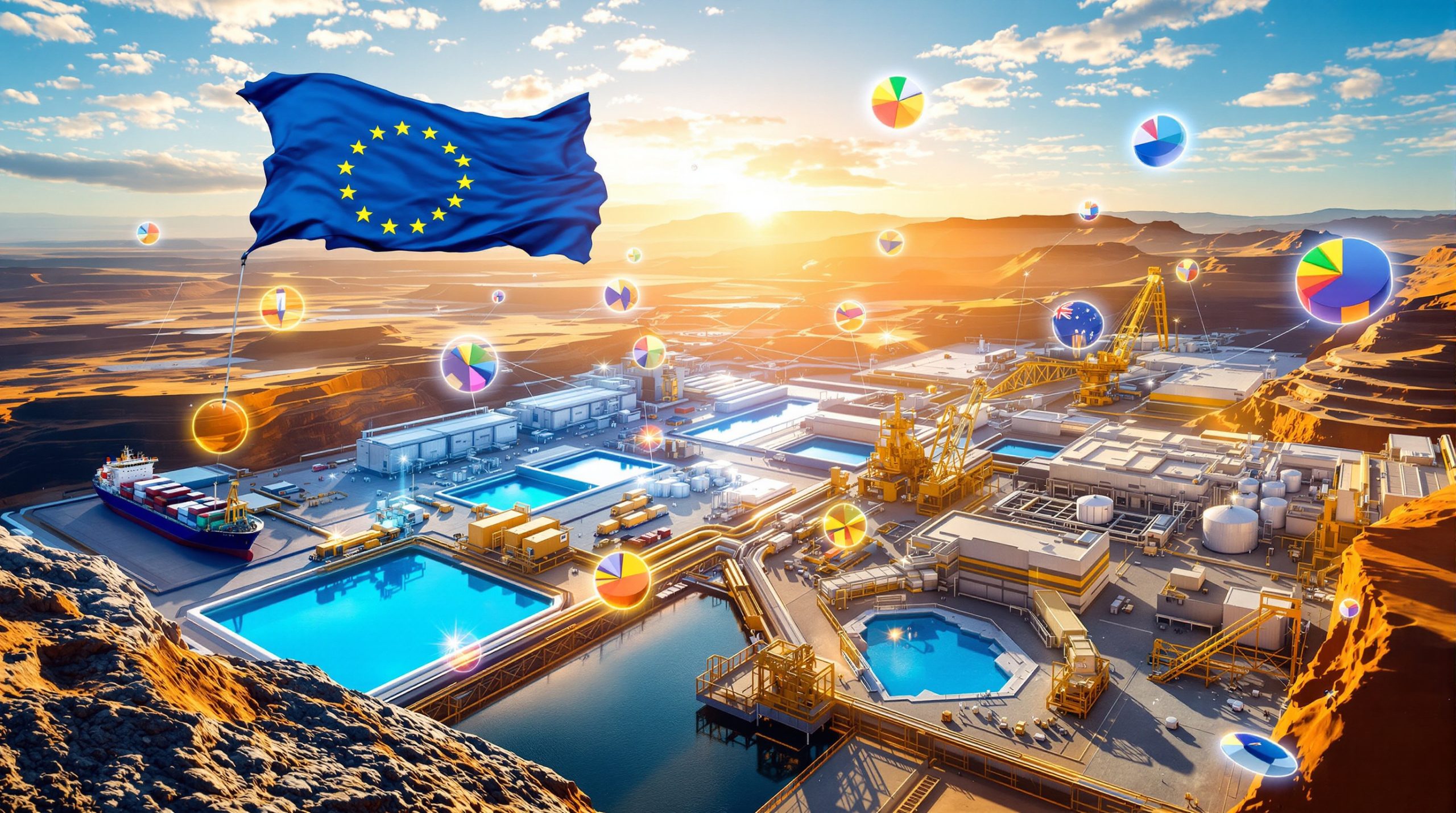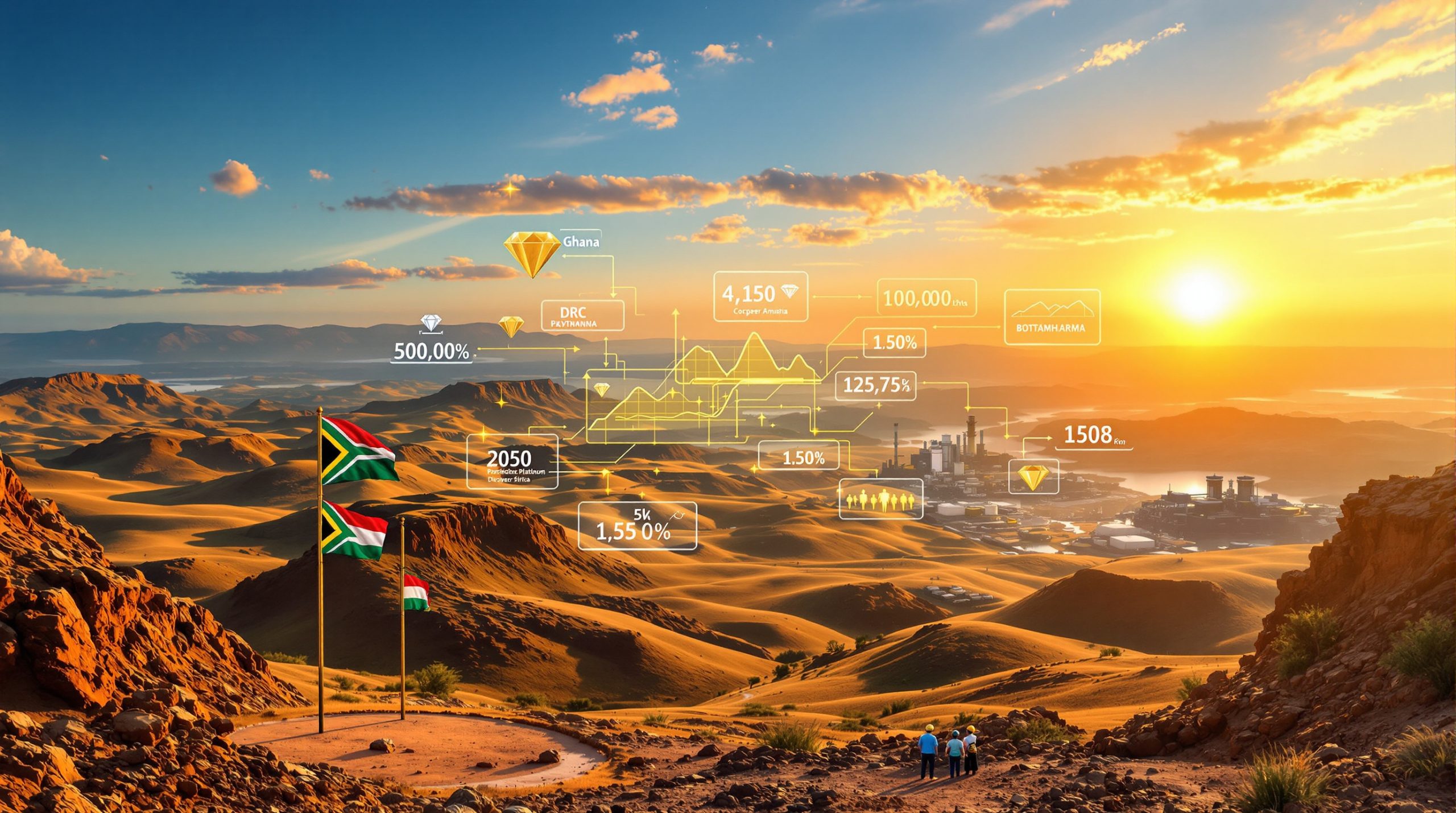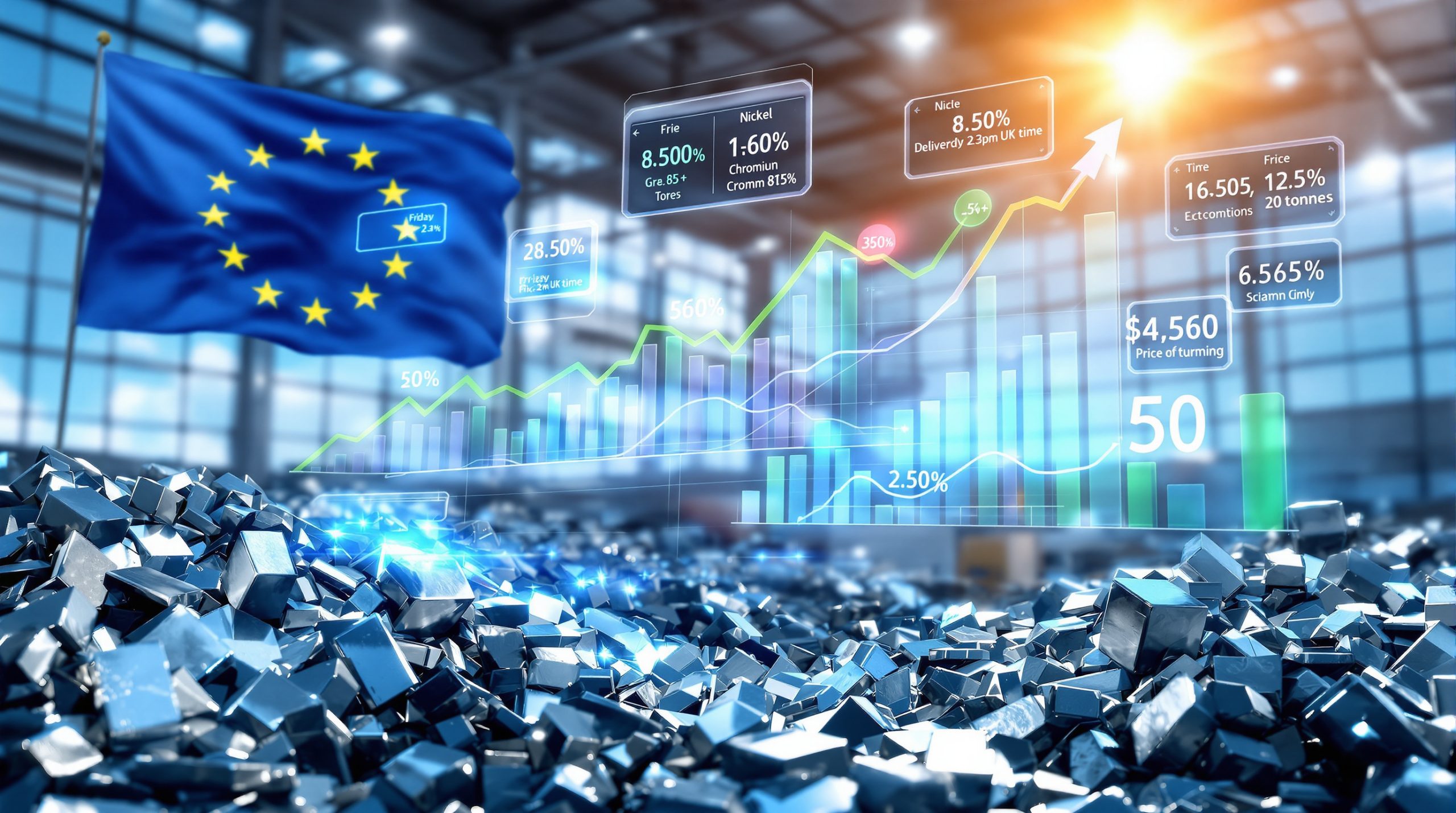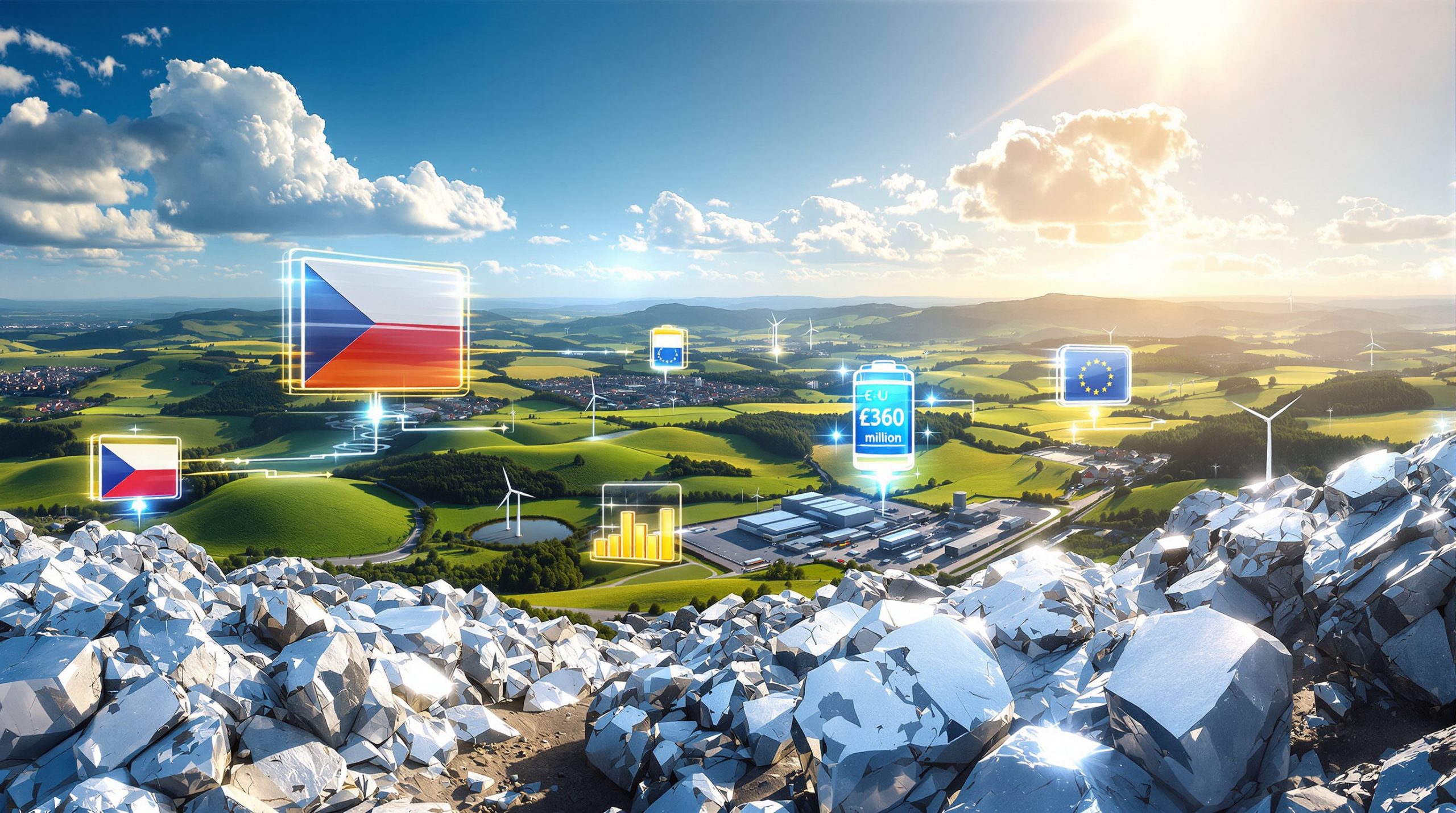Carbon-Free Manganese Ferroalloys: How Hydrogen Is Revolutionizing South African Metallurgy
South Africa's metallurgical industry is undergoing a revolutionary transformation with the development of the hydrogen-based HAIMan process for producing manganese ferroalloys. This innovative technology replaces traditional carbon-based reduction methods with a sustainable alternative that eliminates carbon dioxide emissions completely. As South Africa holds 74% of the world's identified land-based manganese resources, this breakthrough positions the country to reclaim its leadership in the global ferroalloy market while addressing critical environmental challenges through electrification and decarbonisation.
What Is the HAIMan Process and How Does It Work?
The HAIMan process represents a groundbreaking approach to sustainable metallurgy, using hydrogen and aluminum instead of carbon-based reductants to produce high-quality manganese ferroalloys. This innovative method operates through two distinct phases that fundamentally transform traditional production methods.
The Pre-Reduction Phase
In the initial stage, hydrogen gas serves as the primary reductant, creating a paradigm shift in metallurgical processing:
- Hydrogen gas reacts with manganese ore at controlled temperatures
- The process completely eliminates carbon dioxide emissions
- Water vapor is the only byproduct, replacing greenhouse gases
- The pre-reduced material contains partially reduced manganese oxides
This hydrogen-based approach marks a significant departure from carbon-dependent reduction methods that have dominated the industry for decades.
The Smelting Phase
Following pre-reduction, the process moves to the smelting phase:
- Aluminum metal acts as the reductant in specialized furnaces
- The reaction produces manganese ferroalloys with exceptionally high purity
- Laboratory testing has confirmed manganese content exceeding 70%
- The process generates recyclable slag rather than waste materials
As Dr. Elias Matinde, Mintek Pyrometallurgy Division Executive Manager, stated: "This testing successfully demonstrated carbon-free production of manganese ferroalloys with a manganese content exceeding 70%."
The resulting slag isn't discarded as waste but becomes a valuable resource itself. This material undergoes further processing to recover alumina and other compounds that can be used in cement manufacturing, creating a circular production system with minimal environmental impact.
Why Is This Technology Significant for South Africa's Mining Industry?
South Africa's vast manganese resources position the country to be a global leader in manganese production, yet several challenges have historically limited the full economic potential of these resources.
Current Challenges in South African Ferroalloy Production
The local ferroalloy industry faces multiple obstacles that have diminished its competitiveness:
- Rising manganese ore prices have squeezed profit margins
- High electricity costs from traditional electric furnace operations
- Carbon taxes and emissions regulations increasing production expenses
- Significant carbon emissions from conventional carbon-based processes
- Growing international competition from lower-cost producers, particularly in Asia
- Aging infrastructure requiring significant capital investment
These factors have led to the closure of several major ferroalloy facilities in recent years, including what was once the world's largest ferromanganese producer, Metalloys (now Khwelamet).
Strategic Benefits of the HAIMan Process
The introduction of the HAIMan technology offers numerous advantages that could revitalize South Africa's metallurgical sector:
- Economic Renaissance: Potential to reestablish South Africa as a competitive ferroalloy producer
- Resource Maximization: Creates new value from manganese-rich waste materials and ore dumps
- Environmental Leadership: Positions South Africa at the forefront of green metallurgy
- Job Creation: Supports industrial growth through new and revitalized production facilities
- Value Addition: Transforms raw materials into high-value products within South Africa
- Technology Leadership: Establishes South African innovation in sustainable metallurgy
- Energy Security: Reduces dependence on coal-based electricity generation
Dr. Molefi Motuku, Mintek CEO, emphasized the strategic importance: "The HAIMan process is a major step in revitalizing the ferromanganese industry and aligns with South Africa's broader goals for mineral beneficiation in South Africa and sustainable development."
How Does HAIMan Compare to Traditional Ferroalloy Production Methods?
The contrast between conventional ferroalloy production and the HAIMan process reveals the revolutionary nature of this technological advancement.
Traditional Ferroalloy Production
Conventional methods rely on carbon-intensive processes with significant environmental drawbacks:
- Electric arc furnaces operate at extremely high temperatures (1600-1800°C)
- Production requires approximately 2.2 tons of carbon dioxide per ton of alloy produced
- Substantial electrical energy consumption (7-9 MWh per ton of alloy)
- Creates waste materials that require disposal and management
- Depends on carbon-based reductants like metallurgical coke, coal, or charcoal
- Produces lower manganese content alloys (typically 60-65% Mn)
These factors have contributed to declining competitiveness, especially as energy costs rise and carbon regulations tighten globally.
HAIMan Process Advantages
The hydrogen-aluminum innovation delivers substantial improvements across multiple performance metrics:
- Zero Carbon: Eliminates carbon dioxide emissions entirely from the production process
- Circular Production: Achieves zero waste through complete material recovery systems
- Higher Quality: Produces premium alloys with manganese content exceeding 70%
- Resource Efficiency: Recycles slag to recover valuable materials (alumina, grey mud)
- Byproduct Utilization: Repurposes materials for cement manufacturing and other applications
- Energy Optimization: Significantly improves energy efficiency compared to traditional methods
- Water Production: Generates water rather than greenhouse gases as a reaction byproduct
"The HAIMan process eliminates CO₂ emissions entirely and achieves zero waste while producing higher-quality alloys than conventional methods. This represents a fundamental shift in how we approach metallurgical processing." — Mintek statement
This comparison demonstrates that HAIMan isn't merely an incremental improvement but a fundamental reimagining of ferroalloy production.
What Environmental Benefits Does the HAIMan Process Offer?
The environmental advantages of this carbon-free production method extend far beyond simply reducing emissions, creating a truly sustainable approach to metallurgy.
Emission Reduction
The process creates a transformative impact on greenhouse gas emissions:
- Complete elimination of direct CO₂ emissions from the production process
- Replacement of harmful gases with water vapor as the primary byproduct
- Significant reduction in the overall carbon footprint of the metallurgical industry
- Potential to avoid millions of tons of CO₂ emissions annually if widely adopted
- Alignment with global climate commitments and carbon-neutral manufacturing goals
Waste Management Improvements
HAIMan revolutionizes waste management in ferroalloy production:
- Zero-waste outcomes through innovative material recovery techniques
- Conversion of manganese-rich waste into valuable commercial products
- Effective recycling of slag during the smelting phase rather than disposal
- Recovery of alumina, grey mud, and other residues for industrial applications
- Elimination of traditional slag dumps that can leach harmful materials into soil and water
Resource Efficiency
The process dramatically improves how resources are utilized:
- Maximized resource utilization through complete material recovery cycles
- Reduced reliance on virgin raw materials through recycling and reprocessing
- Creation of circular material flows within the production process
- Minimized environmental impact throughout the value chain
- Conservation of valuable minerals through more efficient extraction and processing
The EU Horizon Programme has recognized these environmental benefits, providing support for the technology's development as part of its commitment to sustainable industrial innovation and decarbonisation in mining.
Who Is Leading This Technological Innovation in South Africa?
The development and implementation of the HAIMan process involves collaboration between several key organizations and individuals driving this technological revolution.
Mintek's Leadership Role
South Africa's national mineral research organization plays the central role in developing this technology:
- Located in Randburg, Gauteng, serving as the innovation hub for the project
- Successfully demonstrated production of carbon-free manganese ferroalloys
- Committed to commercializing the technology for industrial-scale application
- Leading research and development efforts with specialized facilities and expertise
- Coordinating partnerships with industry stakeholders and international collaborators
Key Figures Driving the Innovation
Several prominent experts are spearheading this technological breakthrough:
- Dr. Molefi Motuku (Mintek CEO): Emphasizes revitalizing the ferromanganese industry as a strategic priority for South Africa's economic development
- Dr. Elias Matinde (Mintek Pyrometallurgy Division Executive Manager): Leads technical development and has reported successful testing with manganese content exceeding 70%
- Research Teams: Specialized metallurgists and engineers working to scale the process from laboratory success to commercial application
International Collaboration
The project benefits from significant global partnerships:
- Strategic alliance with leading research organizations from Europe and South Africa
- Support from the European Union's Horizon program for sustainable technology development
- Focus on implementing energy-efficient production methods aligned with global climate goals
- Commitment to significant CO₂ emission reductions through technological innovation
- Knowledge exchange with international experts in hydrogen metallurgy and sustainable processing
This collaborative approach brings together diverse expertise to accelerate development and implementation.
What Other Ferromanganese Developments Are Happening in South Africa?
The HAIMan process is part of a broader movement to revitalize South Africa's ferromanganese industry through innovative technologies and strategic investments.
Khwelamet Ferromanganese Revival
A major development involves the rebirth of a historic facility:
- Mining company Menar acquiring the former South32/Anglo Joint Venture Metalloys ferromanganese asset
- Facility renamed to Khwelamet from the previous Metalloys operation
- Was once the world's largest ferromanganese producer before being placed on care and maintenance in 2020
- Contains valuable slag dumps from which additional ferroalloys can be recovered
- Features four furnaces, two of which were built in 2015 and represent modern technology
- Planned restart represents a major focus for 2025 in South Africa's metallurgical sector
Vuslat Bayoglu, Managing Director of Menar, emphasized: "Reviving Khwelamet is part of South Africa's mining-linked reindustrialization efforts and will create significant value from both new production and historical materials."
SmeltDirect Technology
Another promising innovation is emerging from established industry players:
- Home-grown South African smelting technology being developed by African Rainbow Minerals (ARM) and Glencore
- Shows potential to re-establish South Africa as a global ferroalloys hub through efficiency improvements
- Enables production of high-quality, low-cost ferromanganese and ferrochrome
- Reduces electricity requirements substantially when retrofitted to existing smelters
- Lowers operational costs to potentially allow competitive recommissioning of idled facilities
- Improves environmental protection by reducing carbon emissions in the production process
- Estimated capital cost of $175-180 million per 200,000 tons of annual production capacity
André Joubert of ARM Ferrous noted: "SmeltDirect can revitalize dormant plants and create a new generation of more efficient ferroalloy facilities that will strengthen South Africa's position in global markets."
Both developments represent significant investments in South Africa's metallurgical future, complementing the HAIMan innovation with additional pathways to industry revitalization.
How Does This Technology Impact the Global Ferroalloy Market?
The introduction of carbon-free production methods has far-reaching implications for the global ferroalloy market, potentially reshaping industry dynamics and competitive positioning.
Market Applications and Importance
Manganese ferroalloys serve critical functions across multiple industries:
- Essential inputs for iron and steel production, improving strength and durability
- Widely used in the welding industry for specialized applications
- Critical for infrastructure development, automotive manufacturing, and machinery production
- Required for high-performance steel alloys used in demanding applications
- Growing importance in renewable energy infrastructure and electric vehicle production
As global steel production increasingly focuses on environmental performance, the source and carbon footprint of input materials like ferroalloys become more significant to buyers.
Competitive Positioning
The HAIMan technology creates several strategic advantages for South African producers:
- Enables South Africa to leverage its vast manganese resources more effectively
- Provides cost advantages through improved efficiency and reduced energy consumption
- Creates potential for South Africa to regain market share lost to Chinese producers
- Positions South African producers at the forefront of sustainable metallurgy
- Differentiates South African products in a market increasingly focused on environmental credentials
- Addresses the carbon border adjustment mechanisms being implemented by major trading partners
Future Market Outlook
Several trends suggest strong potential for carbon-free ferroalloys:
- Growing demand for low-carbon materials in manufacturing to meet scope 3 emission targets
- Increasing pressure on industries to reduce environmental impact throughout supply chains
- Premium pricing potential for sustainably produced ferroalloys as green steel production expands
- Opportunity to meet evolving regulatory requirements worldwide for cleaner industrial inputs
- Alignment with major automotive and construction industry commitments to reduce embodied carbon
Mintek has stated: "HAIMan positions South Africa as a sustainable metallurgy leader at precisely the moment when global markets are prioritizing environmental performance alongside traditional quality and cost considerations."
What Are the Economic Implications for South Africa?
The successful implementation of carbon-free ferroalloy production presents significant economic opportunities that extend beyond the immediate metallurgical sector.
Job Creation and Skills Development
The technology offers important employment benefits:
- Potential to revive dormant plants and create new employment opportunities in mining communities
- Development of specialized skills in advanced metallurgical processes and green technologies
- Support for local communities through industrial activity and economic multiplier effects
- Creation of technical roles requiring specialized training and education
- Potential to establish South Africa as a center of expertise in sustainable metallurgy
Value Addition to Mineral Resources
HAIMan supports South Africa's mineral beneficiation strategy:
- Transforms raw manganese ore into higher-value ferroalloy products
- Increases export value by approximately 3-5 times compared to raw material exports
- Reduces reliance on raw material exports and their price volatility
- Creates manufacturing opportunities for downstream products using ferroalloys
- Supports South Africa's broader mining sustainability transformation and industrialization goals
- Maximizes the economic potential of the country's vast manganese resources
Industrial Revitalization
The broader economic impacts include:
- Contribution to mining-linked reindustrialization efforts in key industrial regions
- Support for the development of downstream manufacturing in steel and related sectors
- Strengthening of South Africa's industrial base through technological innovation
- Improved balance of trade through higher-value exports and import substitution
- Development of ancillary industries supporting the ferroalloy sector
- Potential to attract foreign investment in sustainable metallurgy
These economic benefits align with South Africa's broader development goals of industrialization, job creation, and sustainable economic growth.
What Challenges Must Be Overcome for Widespread Adoption?
Despite its promising potential, several challenges must be addressed for widespread adoption of the HAIMan process and related technologies.
Technical Considerations
The path from laboratory success to industrial application requires addressing:
- Scaling the technology from demonstration to commercial production volumes
- Ensuring consistent quality in larger production volumes with variable input materials
- Optimizing process parameters for maximum efficiency and product quality
- Developing specialized equipment for hydrogen-based metallurgical processing
- Establishing reliable hydrogen supply chains for industrial-scale operations
- Creating robust quality control systems for novel production methods
Economic Factors
Financial considerations will significantly influence adoption rates:
- Initial capital investment requirements for new facilities or retrofitting existing ones
- Competition from established production methods with fully depreciated assets
- Market acceptance of products from new processes and willingness to pay green premiums
- Access to financing for technology adoption, particularly in developing markets
- Economic impact of carbon pricing and environmental regulations on competing technologies
- Cost curves for hydrogen production and availability of affordable green hydrogen
Implementation Timeline
Realistic timelines must account for multiple factors:
- Regulatory approvals and environmental certifications for new production methods
- Infrastructure development and retrofitting existing facilities for hydrogen utilization
- Training and workforce development for new technologies and production approaches
- Establishment of supply chains for new input materials like industrial-grade aluminum
- Market development for premium carbon-free ferroalloy products
- Piloting and demonstration phases to validate commercial viability
"While the technical foundations have been proven, moving to full commercial implementation requires coordinated efforts across the value chain, from hydrogen production to market development for green steel inputs." — Mintek statement
The implementation of these new technologies will also be influenced by broader industry innovation trends that are reshaping the mining and metallurgical sectors globally.
FAQs About Carbon-Free Manganese Ferroalloy Production
What makes the HAIMan process different from traditional ferroalloy production?
The HAIMan process replaces carbon-based reductants with hydrogen and aluminum, eliminating CO₂ emissions and generating zero waste while producing high-quality manganese ferroalloys with manganese content exceeding 70%. Traditional methods use coal or coke as reductants, creating significant carbon emissions and lower-grade alloys.
How does this technology
Want to Capitalise on the Next Major Mineral Discovery?
Discovery Alert's proprietary Discovery IQ model instantly notifies investors about significant ASX mineral discoveries, turning complex data into actionable investment insights before the broader market responds. Explore why historic discoveries can generate substantial returns by visiting Discovery Alert's dedicated discoveries page and begin your 30-day free trial today.




